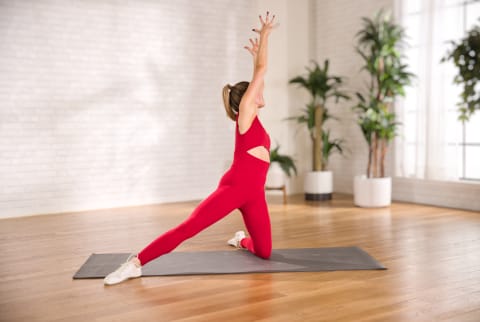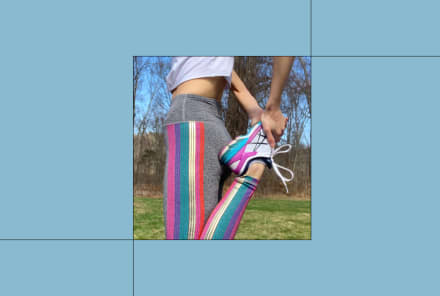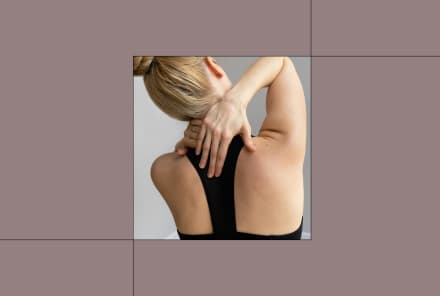Advertisement
The Best Way To Work Out During Each Phase Of Your Menstrual Cycle



Do you ever notice that at some points during the month, you feel like you could run a marathon—while at other times, you want to do nothing more than curl up on the couch? Well, if you're a person with a menstrual cycle, you may want to take note.
Menstrual cycles are truly powerful: They have a major influence over our brain function, general mood, blood sugar levels, energy, and so much more.
While the shifts in hormone levels throughout our cycle can feel overwhelming, the good news is, we don't have to be victims of these changes (or the coinciding symptoms). In fact, there are plenty of ways to support our bodies at each stage—such as mindfulness or nutrition. Another powerful tool in your toolbox? Fitness!
Let's dive into some of the ways your cycle influences exercise, and how you can best optimize your routine.
How do our hormones affect our workouts?
Throughout each stage of our menstrual cycle, hormones—such as estrogen, testosterone, and progesterone—rise and fall. Those hormones affect our energy, mood, strength, susceptibility to injury, and how we use different foods for fuel.

All of these factors can have a major impact on not only how you feel but also how you perform in your workouts. That's why tailoring your fitness routine to what is happening in your body hormonally can greatly enhance sustained energy and even help manage some of the side effects you may be experiencing.
What is the benefit?
Throughout the four phases of the menstrual cycle—menstrual, follicular, ovulatory, and luteal—there are natural hormonal shifts that also drive changes in energy. Instead of doing the same type of exercise every day, working out in tune with your menstrual cycle allows you to adjust based on these hormone fluctuations and work out according to your natural energy.
For instance, during the first half of your cycle after your period ends and up until ovulation, estrogen and your natural energy are rising, so the body is more primed for alternating strength and cardio workouts. During the second half of your cycle, estrogen drops immediately after ovulation then slowly rises and falls again toward the end of your luteal phase.
As these hormonal fluctuations occur, you may experience natural fluctuations in your energy. It's important to listen to your body and adjust your plans accordingly.
The best way to work out for each stage of your cycle:
Menstrual Phase
During this phase of your cycle, your energy will be at its lowest, so you may feel more tired and lethargic. Be sure to honor yourself and take as much rest as needed.
Move when you feel inclined, and opt for exercise that helps decrease inflammation and stress in the body. I recommend starting with some gentle active stretching to help boost circulation and endorphins. Then, move into some low-impact strength workouts toward the end of your bleed.
This is also the best time to turn inward, listen to yourself, then reflect and release what's not serving you.
Follicular Phase
After menstruation comes the follicular phase. Hormone levels start low at the beginning of the follicular phase (end of your period), then estrogen and testosterone start to rise, which can bring you energy, alertness, and improve your mood.
During this phase, it's great to alternate between strength training and cardio. Also, as you feel positivity coming in, this is the time to really get after your goals! Plus, embrace the spirit of new beginnings you'll likely experience—try a new sport, take on a new challenge, or check out a fitness class with a new friend.
It's worth noting, however, in one study of 113 female athletes, muscle and tendon injury rates were 88% greater in the late follicular phase compared to the follicular phase1 (the increase in hormones means more ligament laxity), so pay extra attention to form and alignment during this time.
Ovulatory Phase
At this point in your cycle, estrogen and testosterone rise to peak levels, boosting the effects of the follicular phase. That means your energy levels will be at their highest—which means this is the phase to make big moves and go hard. If you want to incorporate higher-intensity workouts into your routine, now is the time to do so. I suggest plenty of cardio and circuits to match your energy and enthusiasm!
Just remember to be mindful of the form (ligament laxity is still a concern during this time), and make sure you take proper recovery measures after any intense workouts (including hydrating, stretching, and eating enough protein).
Luteal Phase
The first two to three days of the luteal phase will feel very similar to the ovulatory phase. While you still feel those positive energy levels, feel free to continue doing strength and cardio workouts.
After a couple of days, estrogen and testosterone levels will start to decline, and your body will begin producing progesterone. As a result, you will feel yourself beginning to wind down. This may also be when you start to notice PMS symptoms. At this point, ease into low-impact strength workouts, then prioritize recovery routines (stretching, yoga, walking, etc.).
Instead of pushing through punishing workouts and spiking adrenaline and cortisol during this time, try to work with what your body needs.
In summary:
- Menstrual Phase: Move when you feel inclined. Start with gentle active stretching, then move into low-impact strength workouts.
- Follicular Phase: Alternate between strength/resistance training and cardio.
- Ovulatory Phase: Cardio and circuit training.
- Luteal Phase: First half: Strength and cardio. Second half: Ease into low-impact strength workouts then recovery (stretching, yoga, etc.).
The takeaway.
Tailoring your workouts to each stage of your cycle can be a powerful strategy to help you feel like your optimal self throughout the month. Being mindful of your energy levels, mood, strength, and susceptibility to injury can help you perform at your best and feel great through each stage of your cycle. Working with your body, rather than against it, can be a major game-changer for overall well-being—give a try and see for yourself.
Watch Next
Enjoy some of our favorite clips from classes
Enjoy some of our favorite clips from classes
What Is Meditation?
Mindfulness/Spirituality | Light Watkins
Box Breathing
Mindfulness/Spirituality | Gwen Dittmar
What Breathwork Can Address
Mindfulness/Spirituality | Gwen Dittmar
The 8 Limbs of Yoga - What is Asana?
Yoga | Caley Alyssa
Two Standing Postures to Open Up Tight Hips
Yoga | Caley Alyssa
How Plants Can Optimize Athletic Performance
Nutrition | Rich Roll
What to Eat Before a Workout
Nutrition | Rich Roll
How Ayurveda Helps Us Navigate Modern Life
Nutrition | Sahara Rose
Messages About Love & Relationships
Love & Relationships | Esther Perel
Love Languages
Love & Relationships | Esther Perel











